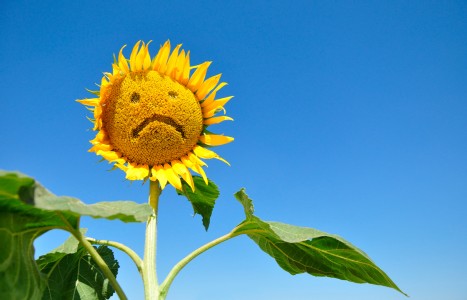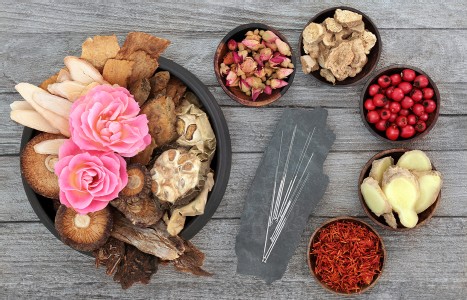Did any of you ever get the feeling in school that it simply was not OK to speak about wanting to be successful? To get into the nitty gritty details of how to make money in practice? Maybe you were even someone like me who was directly told by someone in a position of power that I needed to take what I could get because in private practice, I wouldn’t make money.
Fundamentals of Managing Sports Injuries
We are no longer coined the "Just Do It" generation. We are now known as the "Already Done It" generation. Two words can distinctively define this generation: extreme and .com (dot-com). While the vast majority of Americans earn their living working outside the normal eight-hour workday, America's report card on general physical fitness is at the failing level. Like oil and water, extreme sports activities and physically unfit individuals make a bad combination.
In the management of sports injuries, some concepts of Western medicine and TCM overlap. The first shared concept is the history. As with a typical medical history, it is crucial to first assess the severity of the injury. It is absolutely important for the doctor to have a clear picture of the mechanism of injury. Understanding the mechanism of injury will help direct you to a diagnosis.
Most sports injuries fall into the general category of sprain/strain. Be careful not to let this classification influence your clinical judgement. Simple sports injuries are often the most difficult and protracted kinds to treat. Complex injuries are often easy to identify and usually require special studies such as plain film radiographs, MRIs, CTs or a referral to a specialist.
According to Western medicine, when an injury occurs to the body, it manifests itself in three distinct phases, which are defined as acute, subacute and chronic. A main differentiating factor that separates these three phases is the element of time.
The acute phase spans from the initial onset of injury to the first 72 hours after injury. During the acute stage, the body manifests the trauma with a classic physiologic response. This response is marked by swelling; discoloration; mild to severe localized pain; decreased range of motion; inability to bear full body weight; and superficial temperature changes.
The subacute phase ranges from 72 hours after the initial onset of injury to 90 days after. The subacute stage is a crucial period in which the treating physician can ensure rapid recovery. It is also the hardest phase to differentiate, because it does not have the classic physiological signs usually associated with the acute or chronic phases. Most often the swelling has diminished, the pain has decreased, and the range of motion has slightly increased. Patient compliance becomes an issue because they no longer feel intense pain. Since they don't have excruciating pain, patients may routinely miss followup appointments. Pain should not be the indicating factor that a patient has reached maximum medical improvement.
The chronic stage is characterized by prolonged length of disability and or pain to the afflicted area longer than 90 days. It is often marked by a significant decrease in range of motion, followed by a certain degree of dysfunction. For patients suffering from a chronic injury, there will be minimal improvement in the condition after maximal treatment. There is also a constant threat of susceptibility to reinjury.
In TCM, bi syndrome (painful obstruction) is often associated with pain or soreness of muscles, joints and tendons. Bi syndrome is due to the circulatory obstruction of qi and blood in the channels caused by exterior wind, cold, dampness or traumatic injury. With each main channel, a supporting network of secondary channels exists, consisting of the connecting channels, muscle channels and cutaneous regions. The connecting channels connect the yin and yang paired channels at the limbs. The muscle channels integrate the muscles and sinews within the channels. The cutaneous regions are the 12 areas of the skin under the influence of the 12 channels.
The five transporting points play a crucial role in the treatment of bi syndrome. The three transporting points along the channels distal to the elbows and knees are particularly important to treatment. The shu stream point is effective in enhancing defensive qi. The jing river point is effective in preventing pathogenic factors from invading the joints and sinews. The luo connecting point is also effective, keeping muscles and sinews from being affected.
Although the main etiological factor in bi syndrome is weather, there are predisposing factors to consider, such as excessive sports, work activity and repetitive motion. An underlying blood or yin deficiency also leads to dysfunction of the channels, which leaves them more susceptible to pathogenic factors. Trauma and emotional problems can also be significant contributing factors in bi syndrome.
It is crucial to differentiate the various causes of bi syndrome. If it is wind bi syndrome, there is usually associated pain that moves from one joint to another, as well as soreness, stiffness and limited range of motion. If bi syndrome is caused by dampness, the patient will exhibit express fixed pain, soreness with swelling in the muscles and joints, and an associated sensation of heaviness and numbness in the limbs. If bi syndrome is caused by the cold factor the patient will present with severe pain in a single joint and/or musculature, with significant decrease in range of motion. If the exterior pathogenic factors invade the interior and give rise to heat, the patient will suffer from bi syndrome caused by heat. Heat bi syndrome is characterized by severe pain and swelling of the joints and muscles, with palpable temperature difference and redness in the affected area.
Finally, there is bone bi syndrome, which occurs in long-standing or chronic cases that have progressed from the four previous types. Several key factors are present in patients suffering from bone bi syndrome. First, the patient will have a constitutional deficiency of qi and blood, followed by phlegm accumulation in the joints, blood stasis due to obstruction, and finally, deficiency of the liver and kidneys.
Acupuncture treatment should be focused on expelling the pathogenic factors in the channels and eliminating the qi and blood stagnation. The distal points are effective in treating problems further along the channel and are great for the reducing method. The following tables list distal, local and adjacent points according to area of involvement.
Table I: distal points (not exclusive).
| Area | Points |
| Neck | GB39, SI3, TB5, TB8, BI60, ST40, KI4 |
| Shoulder | TB5, LI4, LU7, TB1, LI1, ST38, BL58 |
| Elbow | LI4, TB5, LI1 |
| Wrist | ST36, SP5, GB40 |
| Fingers | No Distal Points |
| Lower back | BL40, BL60, BL59, BL62 |
| Sacrum | BL40, BL58 |
| Hip | GB41, BL62, GB40, SP3 |
| Knee | SP5, SI5 |
| Ankle | No distal points |
| Toes | LI4 |
Table II: local points (not exclusive).
| Area | Points |
| Neck | BL10, GB20, DU16 (wind) |
| Shoulder | LI15, TB14 |
| Elbow | LI11, TB10, SI8, LI10, LI12, LU5 |
| Wrist | TB4, LI5, SI5, SI4, P7 |
| fingers | TB3, LI3 |
| Lower back | BL23, BL24, BL26, BL25, DU3, BL40, K2, BL60 |
| Sacrum | BL32, BL27, BL28 |
| Hip | GB30, GB29, SP12 |
| Knee | ST36, SP9, Liv7, Liv8, GB 34, GB35 |
| Ankle | SP5, GB40, ST41, BL60 |
| toes | SP3 |
Table III: adjacent points.
| Area | Points |
| Neck | GB21, DU14, BL11 |
| Shoulder | SI9, SI10, SI11, SI12, SI13, SI14, SI15, TB15, GB21, LI14, TB13 |
| Elbow | LI13, LI10, LI14 |
| Wrist | TB5, LU7 |
| Fingers | TB5 |
| Lower back | No adjacent points |
| Sacrum | BL23 |
| Hip | GB31 |
| Knee | SP10, ST34 |
| Ankle | KI7, GB34, ST36 |
| Toes | SP4, ST41, GB34, SP9 |
Herbal treatments involving Chinese medicinal herbs are carefully prescribed in formulations rather than singularly. Once again, the correct differential diagnosis of pain will have a tremendous impact on your patients' outcomes regarding the use of herbal treatments.
| Area | Classic Formula |
| Nech & Shoulder | Wu Yao Shun Qi San (shoulder pain) GE Gen Tang (stiff neck due to cold) Er Zhu Tang (deficient type neck & shoulder disorder) |
| Back Pain | Du Huo Ji Sheng Tang (eliminates wind & dampness) Zuo Gui Wan (kidney yin deficiency) You Gui Wan (kidney yang deficiency) Ba Wei Di Huang Wan (yonify both kidney yin & yang |
| Musculoskeletal Pain | Gui Zhi Shao Yao Zhi Mu Tang (musckuloskeletal & joint pain due to wind heat) Ji Sheng Shen Qi Wan (musculoskeletal & joint pain due to wind cold) Yi Yi Ren Tang (musculoskeletal & joint pain due to dampness) San Bi Tang (musculoskeletal & joint pain due to deficiency of qi & blood) Juan Bi Tang (general musculoskeletal & joint pain) Gui Zhi Fu Ling Wan (internal bleeding due to traumatic sports injury) Tao Ren Cheng Qi Tang (subcutaneous bleeding with severe swelling & pain) |
The following herbs can help direct formulas to a specific body part. This list is not exclusive.
| Area | Herb |
| Neck & top of shoulder | Qiang Hug or Gao Ben |
| Shoulder joint | Jiang Huang |
| Spine | Gao Ben |
| Lower back | Du Huo or Hai Tong Pi |
| Leg | Bi Xie |
| Knee | Niu Xi or Hai Tong Pi |
In TCM, sports injuries can be treated using a combination of ashi points, distal points, local points and adjacent points. If there is only slight swelling or bruising, local points can be utilized. For areas where marked swelling exists, utilizing the corresponding channel points on the unaffected limb will help achieve therapeutic results. Adjacent points may also be used to help control pain and swelling. Associated channel points can also be utilized.
Moxibustion can help induce and promote qi and blood circulation. Cupping, on the other hand, may be contraindicated on the local area because it may cause further swelling and capillary damage. In certain circumstances, however, cupping may be the modality of choice.
Utilizing the best from both systems and combining TCM and Western medicine, you can achieve better outcomes for specific conditions. Let's use a grade II/III ankle sprain strain as an example.
In the acute stage, the initial treatment protocol may consist of cryotherapy (ice) to reduce the swelling and inflammation. Use caution when implementing cryotherapy. Ice left on an injured body part for a prolonged period of time (more than 20 minutes) can produce the physiological response of heat known as Hunting's response. When using any type of cryotherapy, it is essential to first place a barrier between the cold pack/ice with a towel. Remember not to leave it on for more than 7-10 minutes, and utilize alternating cycles.
In the following 12-24 hours, moxibustion can be used to increase circulation and break up the qi and blood stagnation. Electroacupuncture is a very good adjunct therapy to break the pain- spasm-pain cycle. Specific acupuncture points can be used to help decrease swelling and control pain, increase range of motion and help promote healing. Herbal prescriptions, both in the topical and digestible forms, can help promote healing while controlling the pain and inflammation.
Correctly diagnosing a traumatic injury, providing an accurate treatment plan, and managing the injury properly in the acute and subacute stages will have tremendously positive outcomes on the patient's road to recovery.
References
- Chen J. Herbal Alternatives to Drugs in Pain Management, Clinical Manual of Oriental Medicine. Lotus Herbs, 1998.
- Maciocia G. The Practice of Chinese Medicine. Churchill Livingston, 1994.
- Bensky D, Gamble A. Chinese Herbal Medicine Materia Medica, Eastland Press, 1986.
- Bensky D, Barolet R. Chinese Herbal Medicine Formulas and Strategies. Eastland Press, 1990.
- Guang SY. Essential Clinical Experience of Famous Contemporary Doctors. Ancient Chinese Medical Texts Publishing House, 1998.


